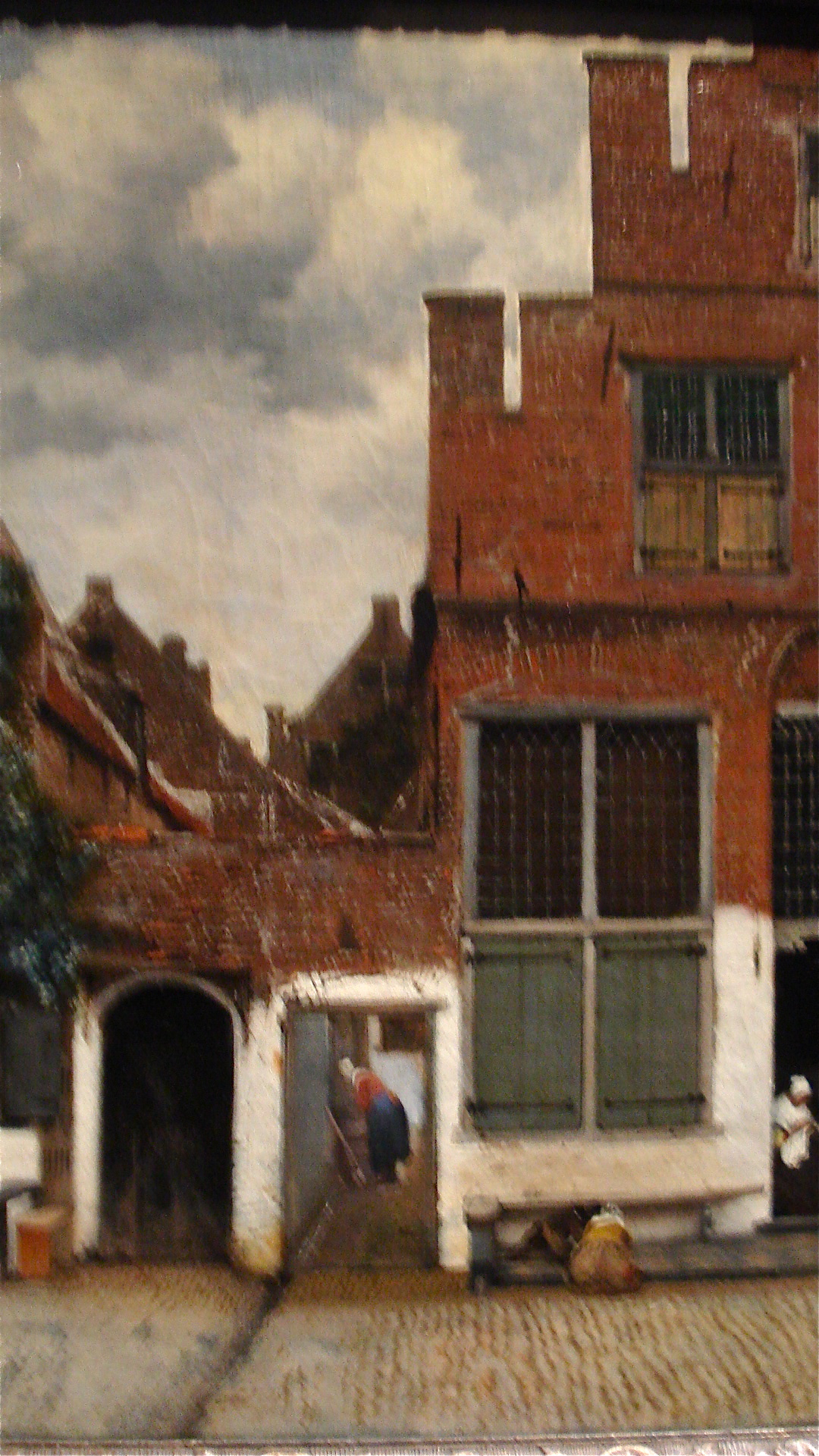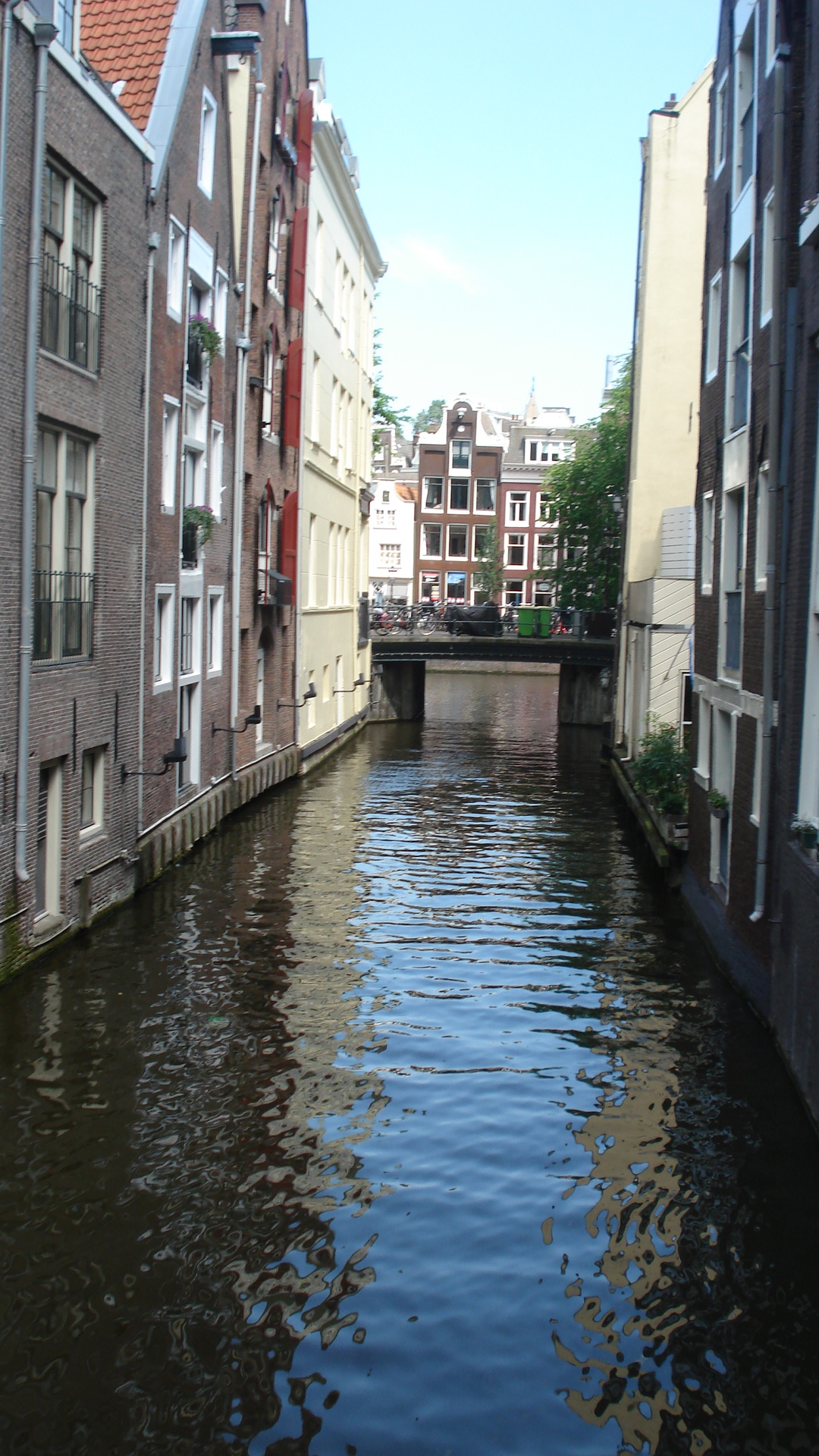Our Trip to Amsterdam
Our Trip to Paris, Bruges, and Amsterdam
Part III: Amsterdam
The Netherlands—the low lands—they start in Belgium and continue through Amsterdam—all flat and at sea level—a good place for bike riding. As we entered Amsterdam, we all thought of a song we like—The Dutchman—by Michael Peter Smith. That night in our hotel room we sang it, and here it is as a poem:
The Dutchman’s not the kind of man
To keep his thumb jammed in the dam
That holds his dreams in
But that’s a secret only Margaret knows
When Amsterdam is golden in the morning
Margaret brings him breakfast
She believes him
He thinks the tulips bloom beneath the snow
He’s mad as he can be but Margaret only sees that sometimes
Sometimes she sees her unborn children in his eyes.
The Dutchman still wears wooden shoes
His cap and coat are patched with love
That Margaret sewed in
Sometimes he thinks he’s still in Rotterdam
He watches tugboats down canals
And calls out to them when he thinks he knows the captain
‘Til Margaret comes to take him home again
Through unforgiving streets that trip him
Though she holds his arm
Sometimes he thinks that he’s alone and calls her name.
The windmills whirl the winter in
She winds his muffler tighter
They sit in the kitchen
Some tea with whiskey keeps away the dew
He sees her for a moment calls her name
She makes the bed up humming some old love song
She learned it when the tune was very new
He hums a line or two
They hum together in the night
The Dutchman falls asleep and Margaret blows the candle out.
Let us go to the banks of the ocean
Where the walls rise above the Zuider Zee
Long ago I used to be a young man
And dear Margaret remembers that for me.
It is a song about old age, but mostly I think it is a song about long-term, unconditional love. Does it capture Amsterdam? Well, not in one regard: it seemed that Amsterdam was filled with young people who are active and act happy.
There does seem to be some current tension in the city. The Netherlands at one time, before they became rich and powerful, were controlled by Spain. When they broke away, they outlawed the Catholic Church and became the most Protestant and capitalist of cities. And yet even in those early years, they showed a tolerance for varied beliefs and practices. Even though the Catholic Church was outlawed, they built churches in Amsterdam, and nobody did anything to stop them. In a similar vein, the Pilgrims to America had a brief stay over in this safe haven. Amsterdam was easy and still is—known as the original capital of hippies in Europe, known for its Red Light District (which we did not visit), and known for its relaxed attitude toward marijuana sales and use. So it is a “live and let live city,” but according to what we heard from a few people, it has found itself in deep conflict as it struggles with an influx of immigrants from the Middle East and northern Africa who, when they get to Amsterdam, do not share the laissez-faire attitude of the city. The Dutch don’t like this uncomfortable position it has put them in of showing prejudice and division; it goes against their beliefs about themselves. I guess the tensions are high, as they also are in other parts of Europe. Yet the “live and let live” attitude still came across.
In Amsterdam, our Japanese hotel (Okura) was beyond the class we are used to. Everything, including the room was luxuriant. When we arrived it was night, and we quickly found a nice meal at a German restaurant—The Bavarian—near our hotel. (You should keep in mind that Amsterdam is at the same latitude as Quebec City, and it stays light until quite late.) In the days we were there, guess what we did a lot—walk and graze. We went to some outdoor markets and bought cheese and fruit. We also took the streetcars to the downtown area and walked around the “Nine Streets” neighborhood and also the Jordaan neighborhood, perhaps our favorite area. We ate perhaps the best dinner of our entire trip—lamb and sole.
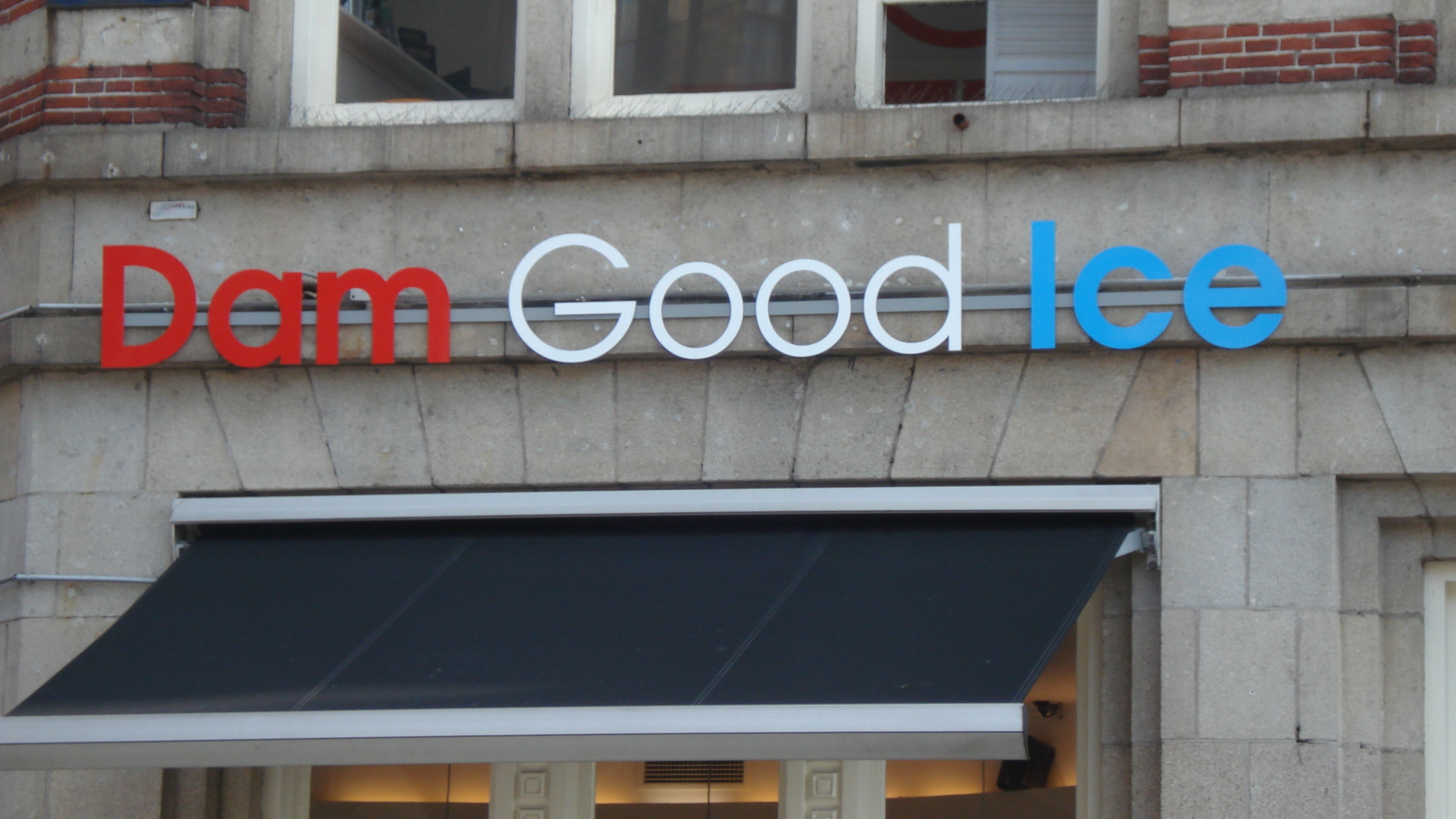


Mostly we criss-crossed the many canals. If you look at a map of Amsterdam, you see that the city is laid out like a wheel. From the center many spokes stretch out to the rim, but the spokes and the rim are all canals. And the city center is surrounded by many concentric circles, also canals, like ripples emanating from a stone thrown into a pond. One need not go far to meet another canal, either one of the spokes or one of the concentric circles. We loved the tree-lined canals, the flowers on the bridges, the houseboats docked along the sides of the canals, and the tall, narrow houses along the banks.
Supposedly, in Amsterdam in times past, people paid property taxes based on the width of the footprint of their house on the street. So for economic reasons they built narrow houses, often only one room wide, but they built them tall, usually five or six stories high. The roofs were usually decorated with beautiful curves and scroll work facing the street. (A similar circumstance occurred in New Orleans in which the method of collecting property taxes helped determine the architecture of the city. In New Orleans, a house was also taxed by its width facing the street. So people again built houses only one room wide, but rather than building up, they built back from the street, one room after another. They call these homes “shotgun houses” because one could look in the front door and down a long house and out the back, as if looking down a shotgun.)
This next photo shows a typical street scene in Amsterdam.
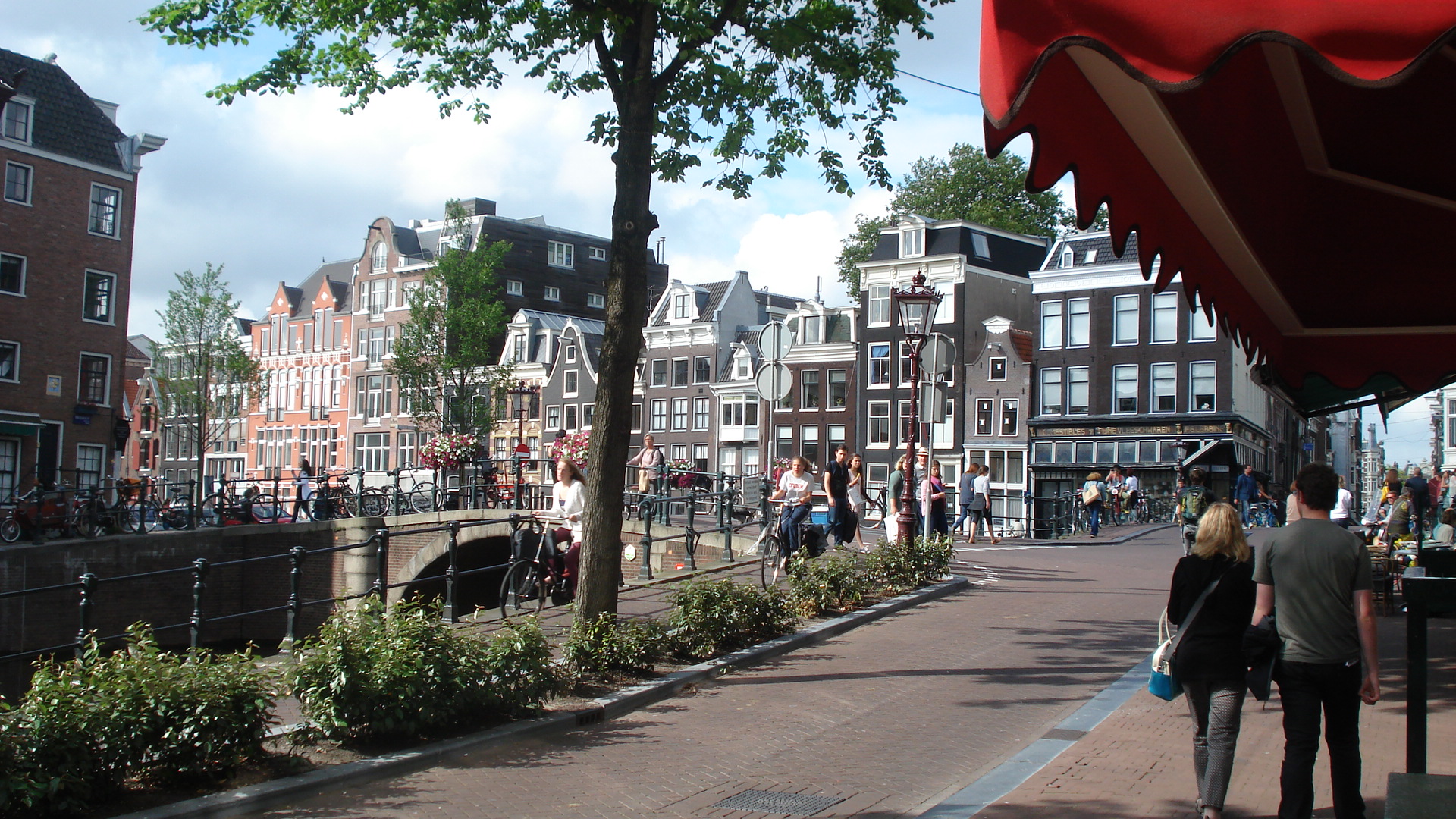
No, just kidding. That is my fuzzy photo of a Vermeer painting at the Rijks Museum, and it was painted of the town of Delft in the 1600s, not even Amsterdam. However, there are some resemblances even today. Below are some photos of the current canals and buildings of Amsterdam. I think they are charming. (You can tell the first one is not a Vermeer because Beth and Ethan are walking along the sidewalk.) How can you not love the look of this city?
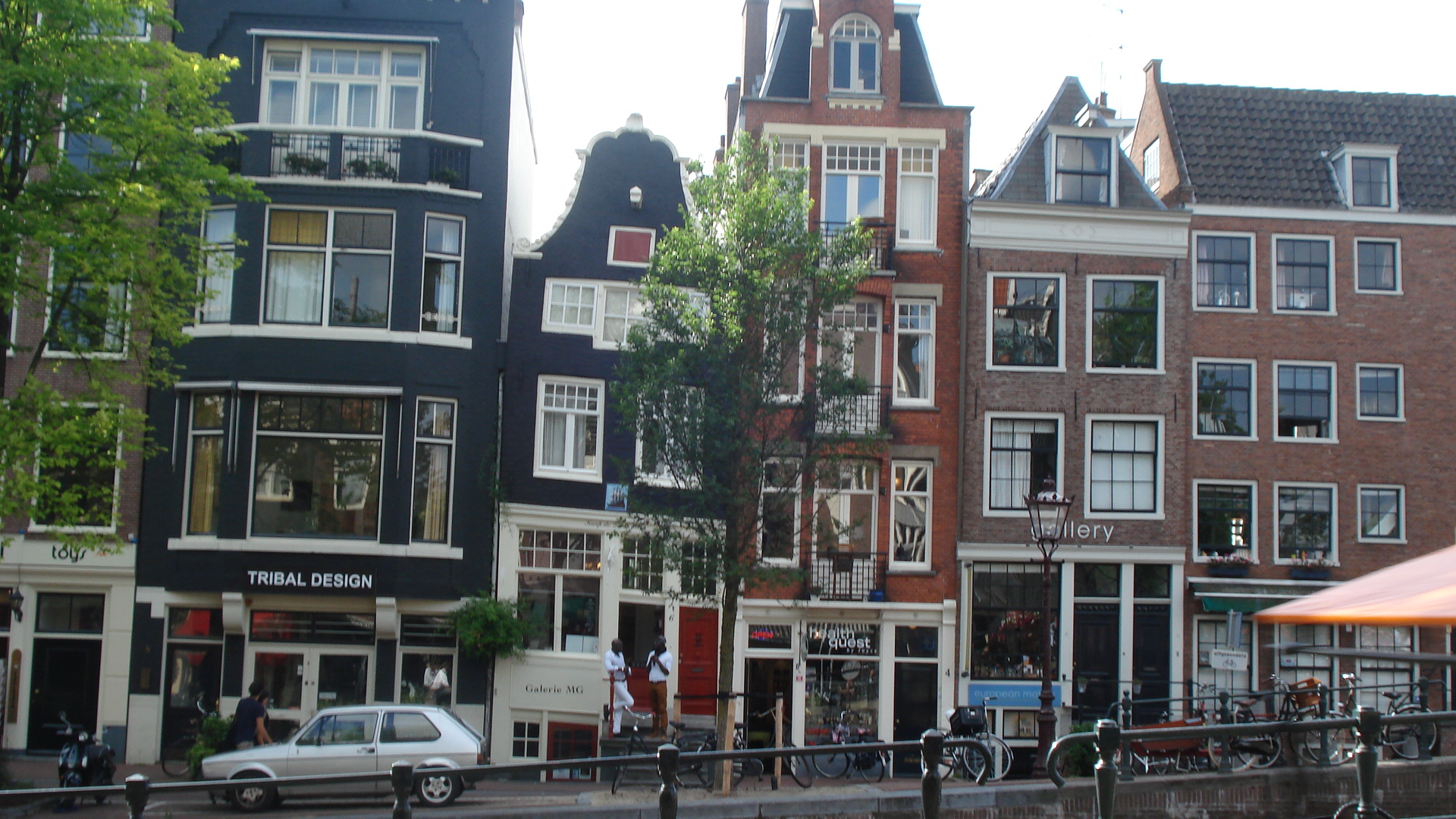
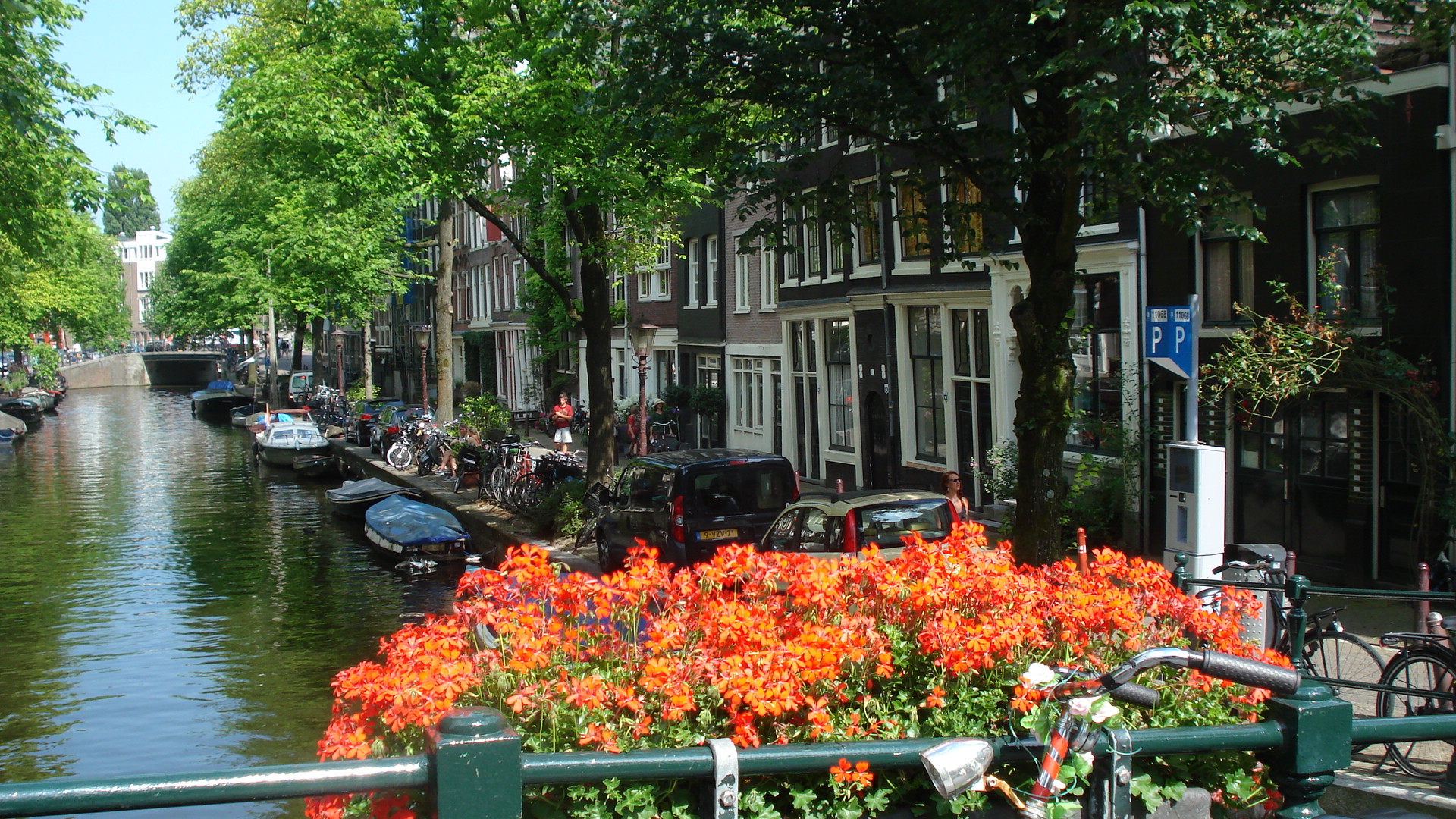

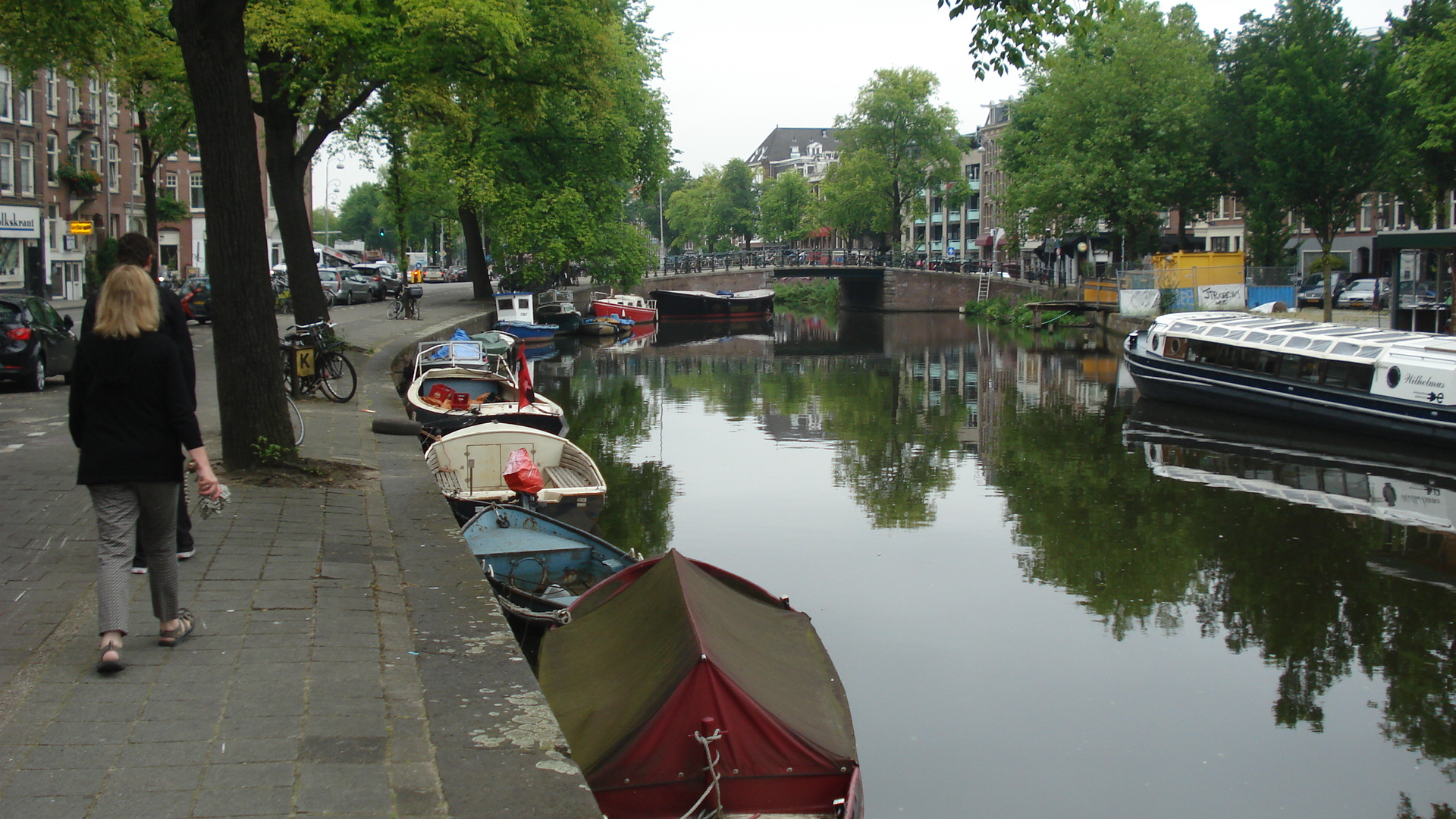
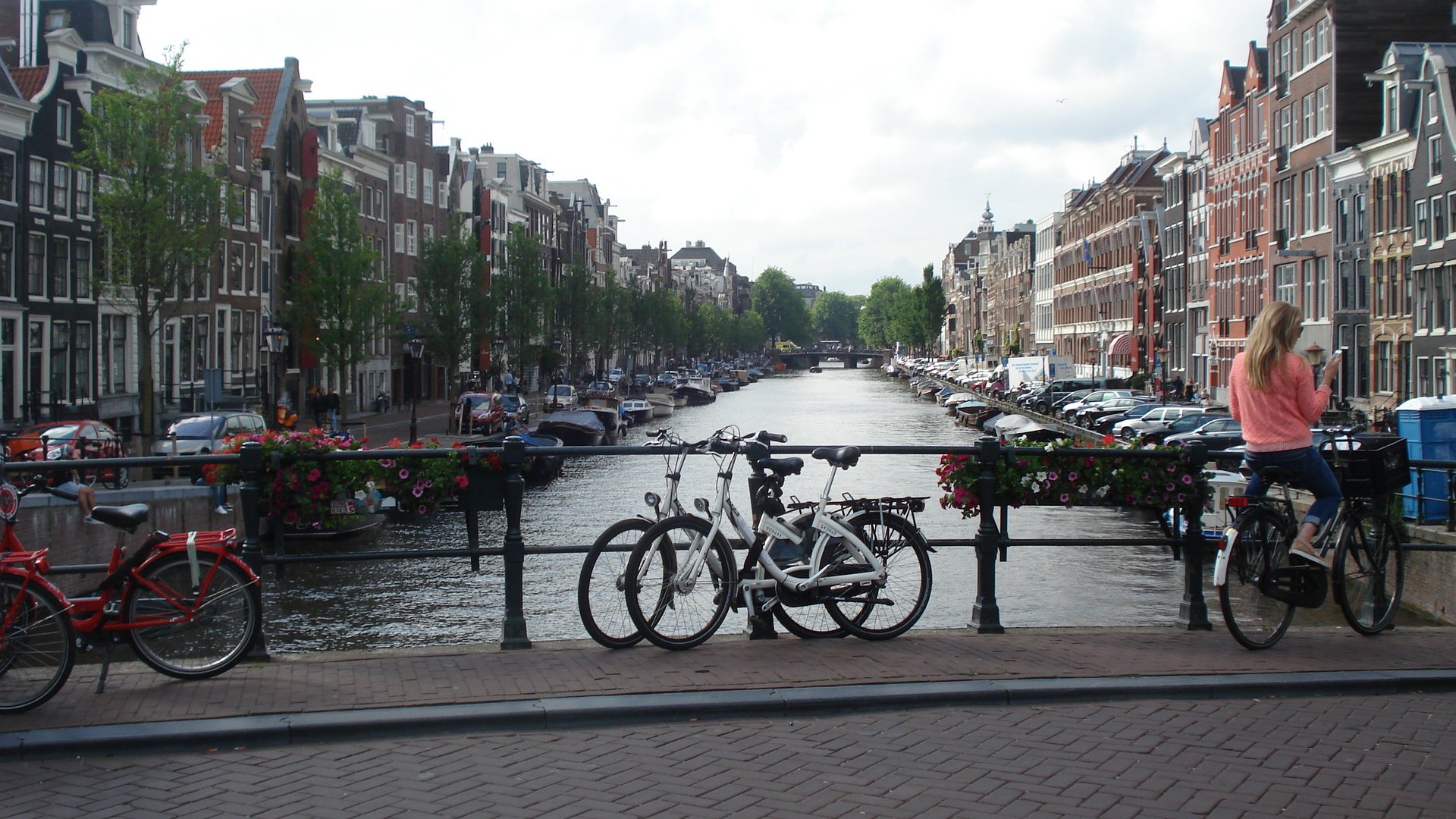
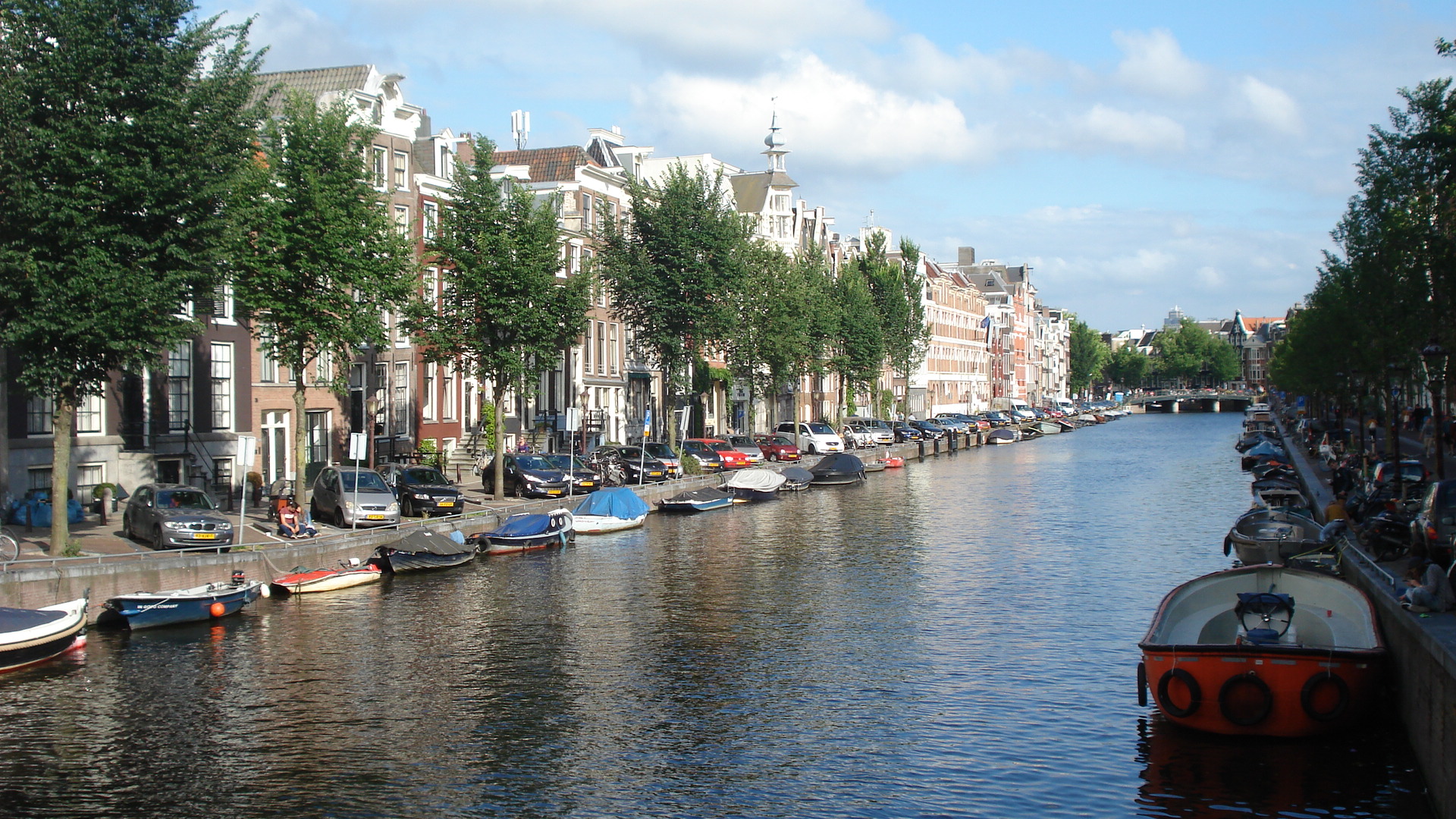
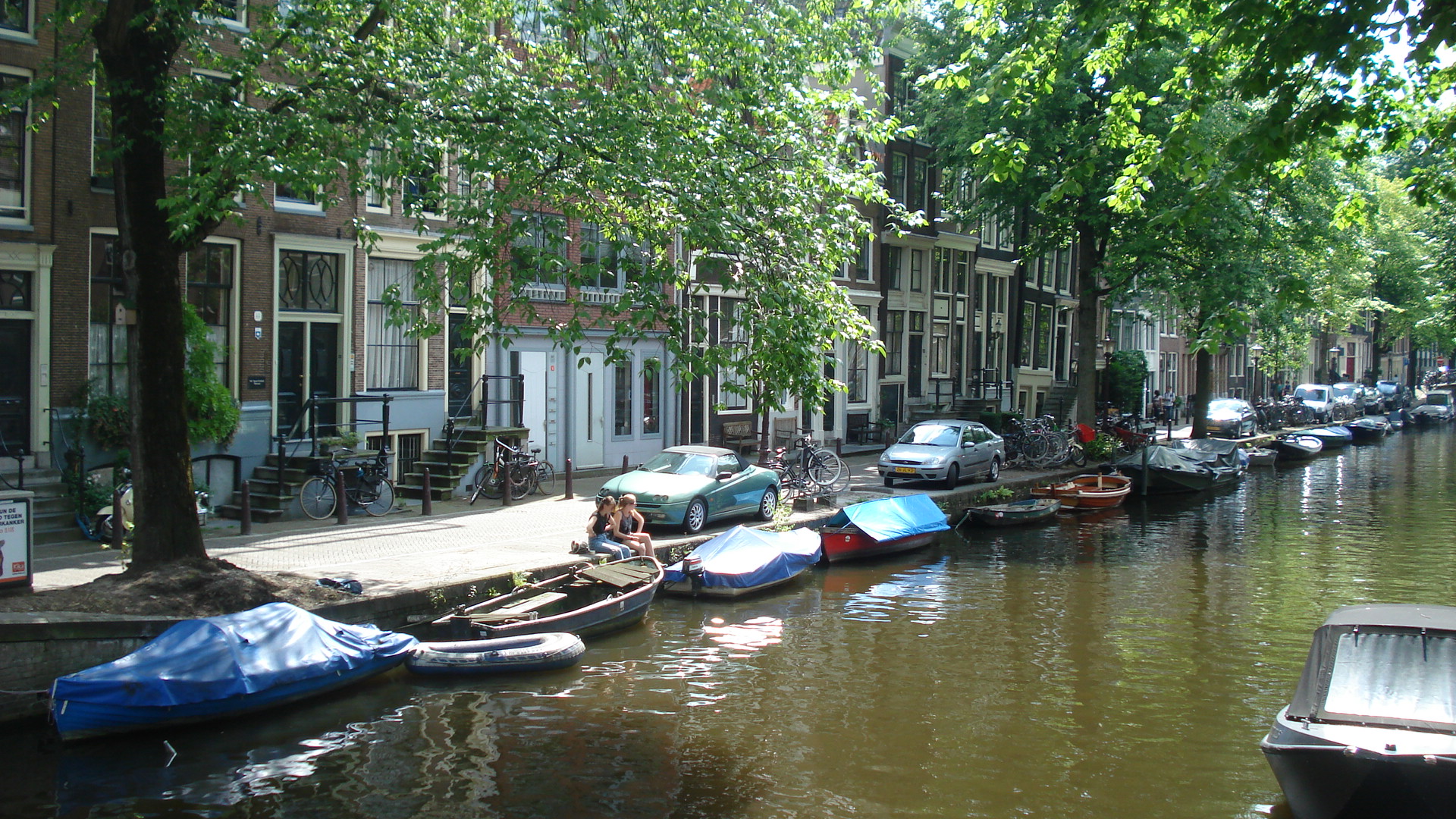

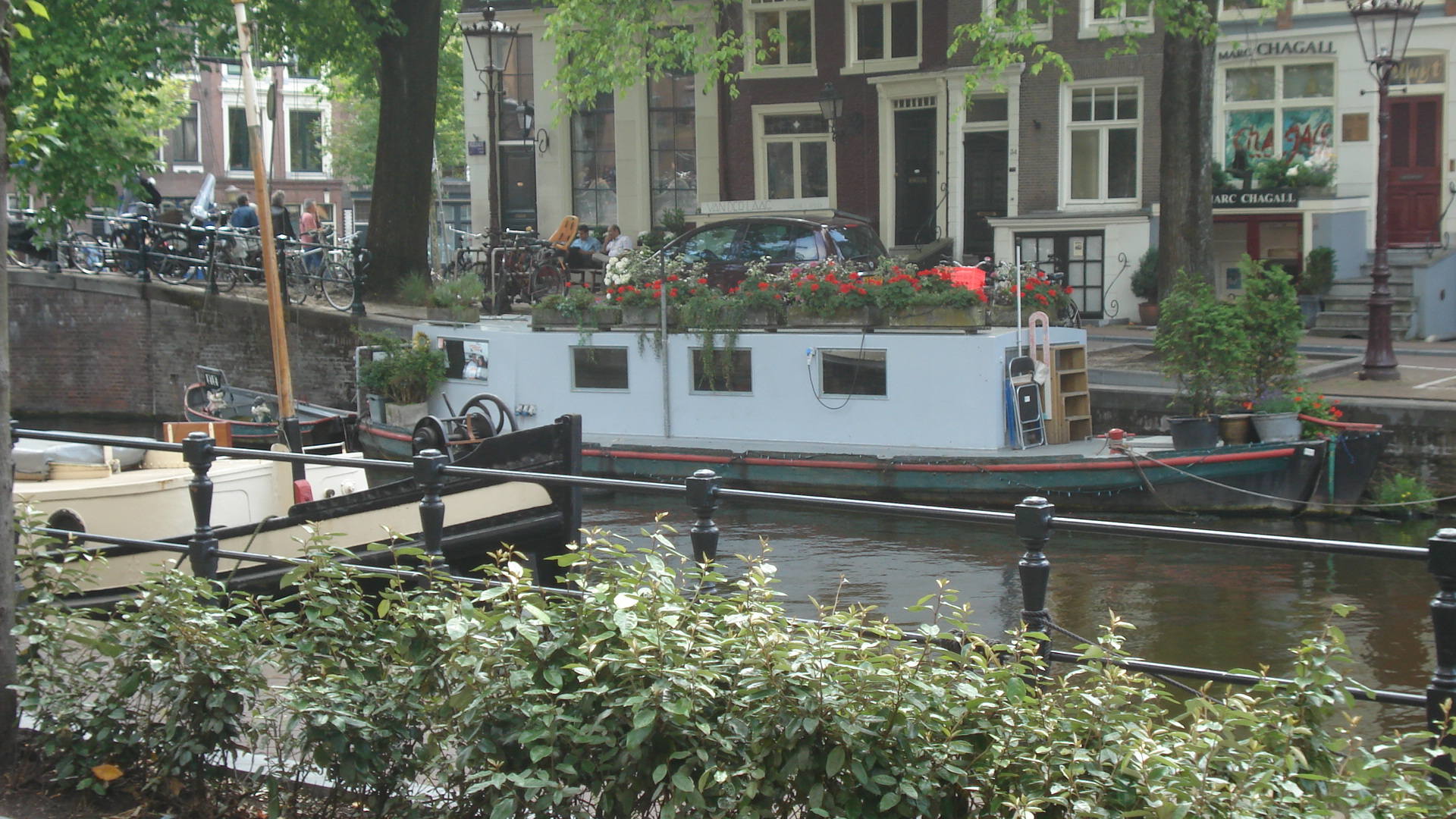
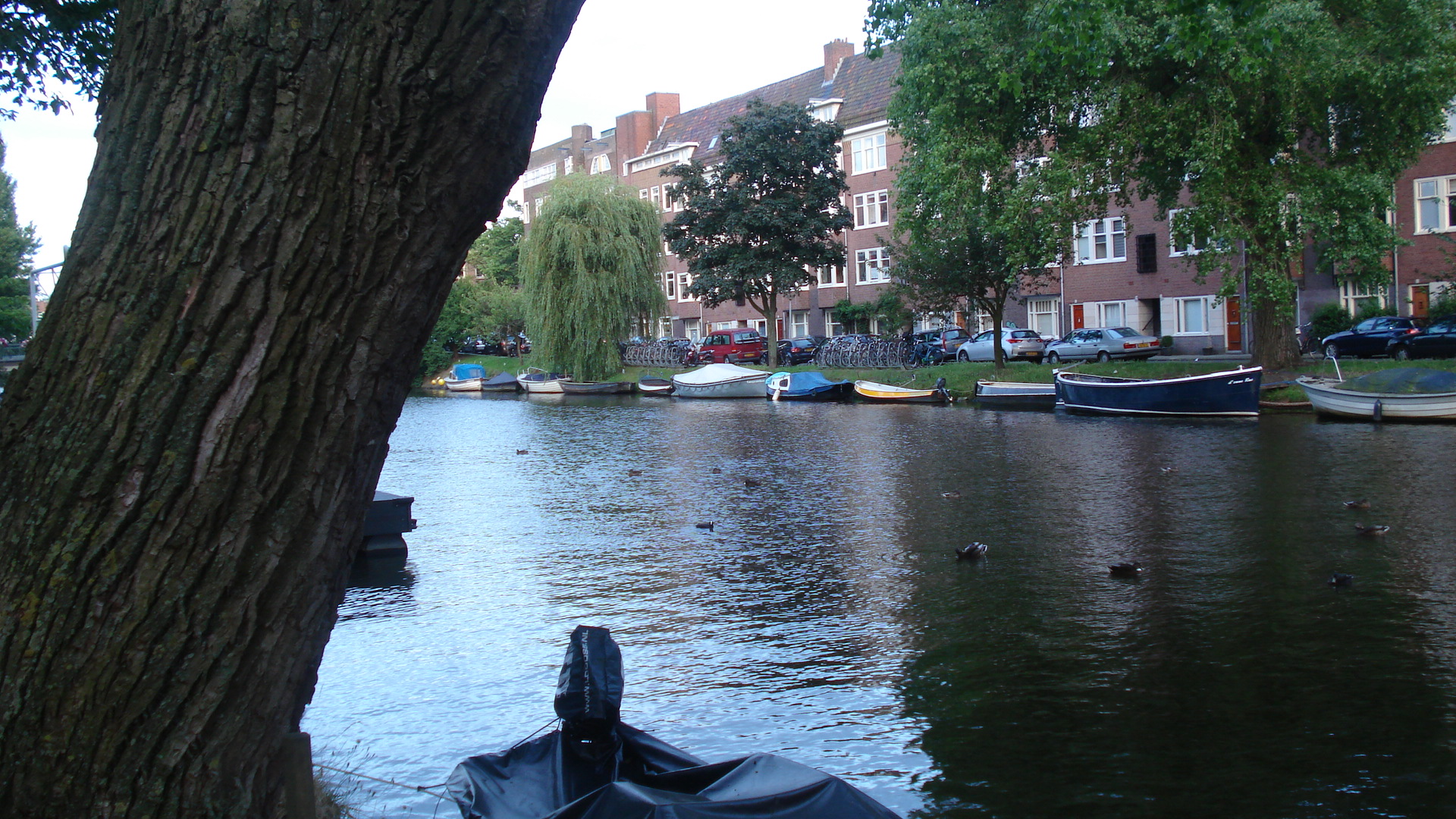
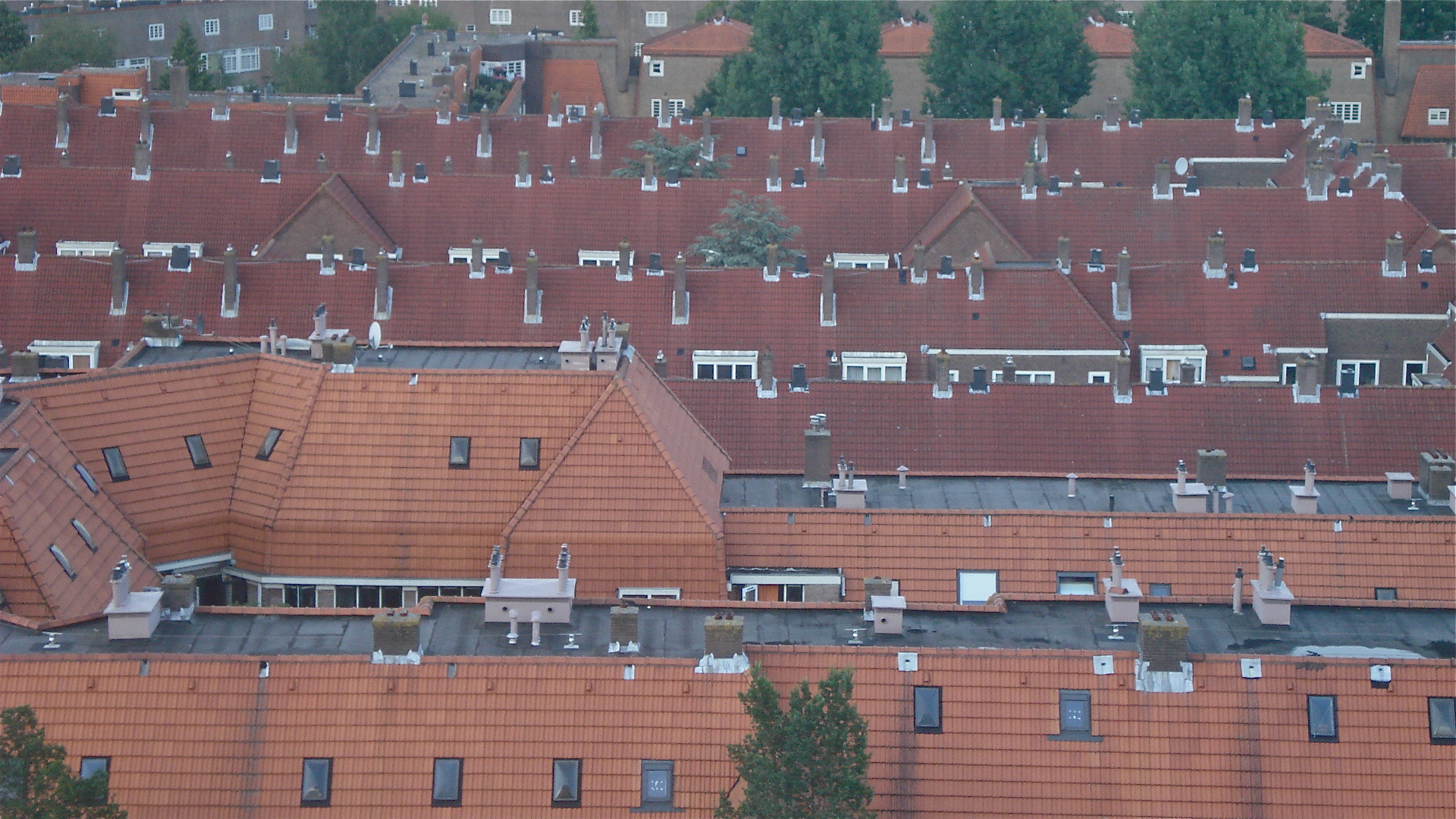
As I mentioned, it is a good place to ride bicycles, and they are everywhere. I think everyone, at all ages, rides a bike. They are parked in large bike parking lots, along the houses, on the bridges, everywhere. Most streets have bike lanes, and the bike riders zip along. I think I figured out the order of right-of-way in Amsterdam: Street cars get highest priority simply because they are bigger and more powerful; bike riders get second priority; cars get next priority; and pedestrians come last. If you don’t believe this order, then good luck because you will get run down. Most of their bikes are sturdy—made to last—but they don’t have many gears or expensive seats or tires or even hand brakes (instead they use foot brakes). Our fancy mountain bikes and racing bikes would look out of place on the streets of Amsterdam.
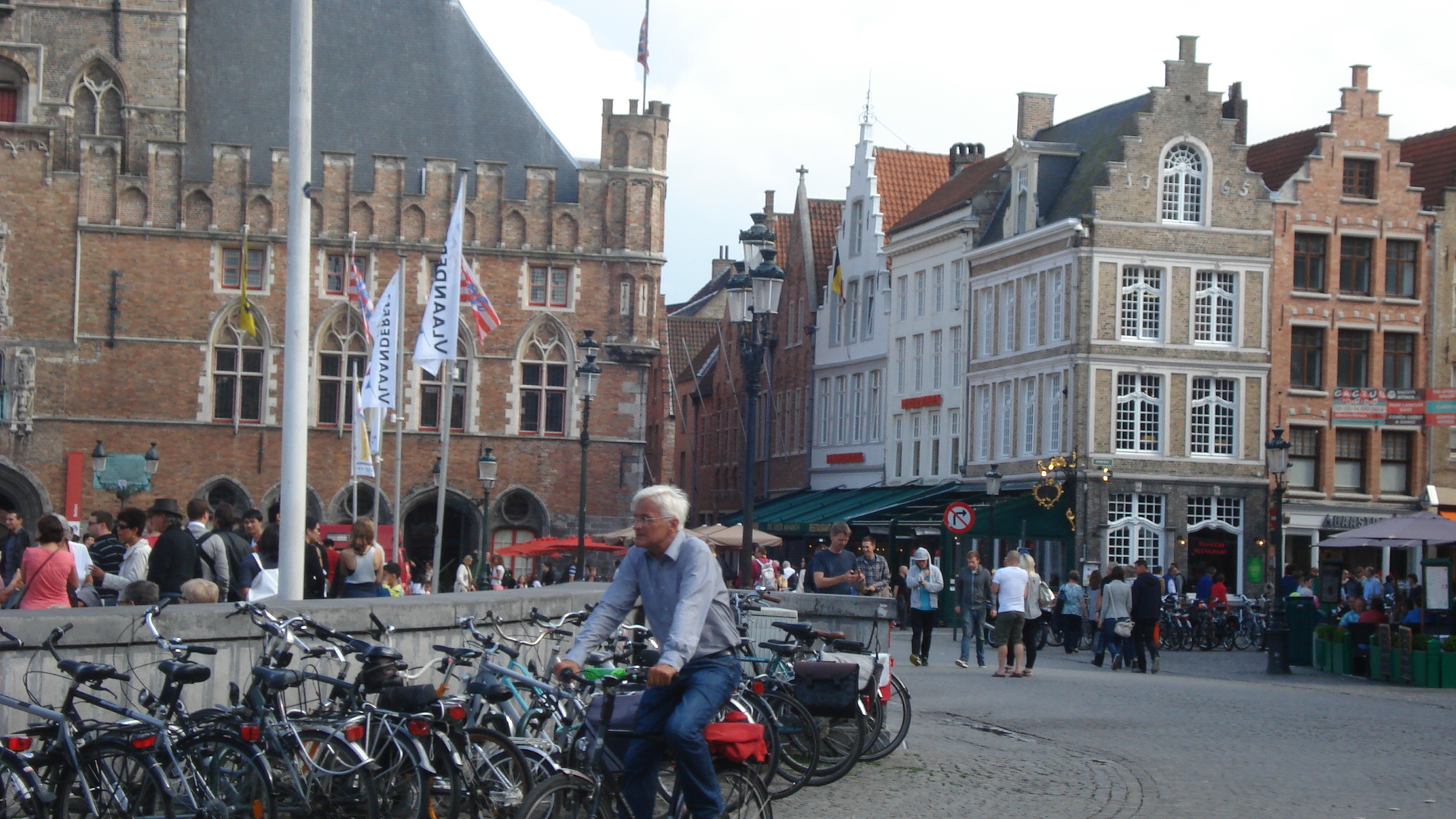
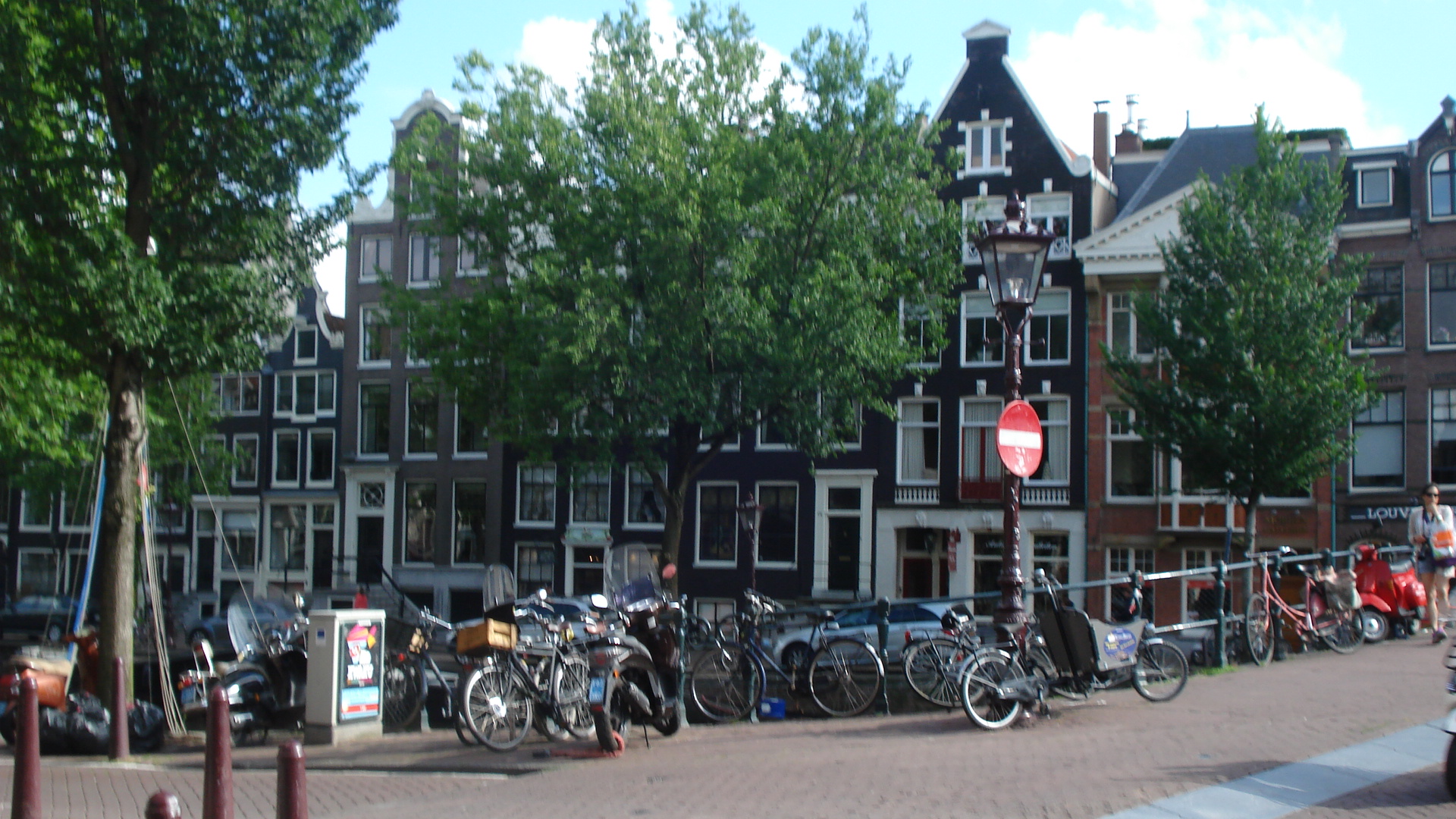
At one point we saw a bicycle accident that resembled a multi-car pile up on a freeway. One person fell over or crashed and then others followed. It was a mess, and at first I thought we would see real injuries. But everyone got up, brushed off their tattered clothes and skinned arms, and peddled off on their bikes. If you decide to use bike transportation in Amsterdam, I would suggest that you peddle really fast—a good defense comes from a good offense.
I wanted to visit one of the diamond factory tours, but we simply didn’t have time. However, let me tell you something about the diamond industry in Amsterdam. Back in the 16th century when some Jews were coming to the Netherlands, they found that they weren’t allowed into many of the trade guilds of this high trade, business capitol. (Remember, even then the Dutch were more tolerant of others and of diversity than were most other countries; however, they still had prejudices and limits as to what Jews could do.) So, these early Jewish groups started some guilds in certain skills that were not covered, and one was as diamond cutters and jewelry developers. You see, at the same time, the Dutch were becoming powerful colonizers and world traders and were developing control of diamond mines in South Africa. So with the diamond cutters guild, they had a corner on the diamond industry. Amsterdam has remained a diamond capitol to this day, though not like in times before World War II.
I mentioned to Beth and Ethan that the Netherlands was known for having great pipe organs in some of their churches and that some wonderful organ music had been recorded in this country. As luck would have it, we were able to attend an organ recital in the Nieuwe Kerk in the downtown area. The organ was beautiful, but the concert was lame—soft, nondescript music. I wanted to hear Bach’s Prelude and Fugue in D minor or something similar. We were disappointed, and I lost credibility with my family, especially as I went to sleep during the concert that I had dragged them to.
We spent one day visiting the Rijks Museum and the Van Gogh Museum. We were moved by the art at both museums. I particularly liked seeing the last three or four paintings that Van Gogh had done. It makes seeing them in person all worthwhile. The highlight of my art tour on this trip was seeing several Vermeer paintings at the Rijks Museum. I don’t care how he did them based on the current controversy of the techniques that he used, they are still moving, and the original painting of the Milkmaid surpasses all copies of it. We looked at it for a long while. Rembrandt is not one of my favorite artists, but we saw some of his paintings that I was not familiar with and that were superb, especially one of his son dressed up as a monk.
On our last night we went to the Anne Frank house rather late, thinking the long lines would have diminished—they hadn’t. I thought that it would not be worth it waiting in line. After all, we all knew the story of Anne Frank and its meaning for that sad time in history, but Beth demanded that we stay and see her house. I am glad that we did. As luck would have it, we got in line right before another family showed up from Boston (the man was wearing a Red Sox cap, as I was). They were traveling all over Europe. One of the daughters was a third grade, school teacher, and so we discussed John’s wish to be an elementary school teacher. The other daughter had just graduated from college in graphic design, and so we discussed the work and career paths of our two older, graphic designer sons, Christopher and Steven.
No photos were allowed in the Anne Frank house. It was austere and much the way the rooms were when it was hidden away from the Nazis. We saw how the eight people lived there in secret for two years. We read many of Anne Frank’s writings and also learned what happened to all the people and those in the shop who had helped hide them and brought them supplies. All eight people were arrested, and only Otto Frank, Anne’s father, escaped being executed at Auschwitz. How he survived, I still do not know. Yes, I knew the story, but it brought it home to me, and it seemed to have a sad, emotional effect on all who were going through the house, young and old, men and women. I would wish that everyone in the world could visit this and other similar Holocaust museums.
And with that visit, we ended our trip to Amsterdam and to Europe. In leaving, Beth did find a Vespa motor scooter that she coveted—her colors. Maybe in Amsterdam; I don’t know in Massachusetts.
At the end of our trip we took a vote and decided that we would be happy to live for a time in Paris, Bruges or Amsterdam, but all three of us would choose Amsterdam as our first choice.
After returning home, we realized that we were in the Amsterdam airport getting ready to leave at the same time as the people on the tragic flight that was shot down across Ukraine. We loved our trip; but there were reminders of our sad world. As Dickens said, “It was the best of times; it was the worst of times.” Maybe that applies to all times.


